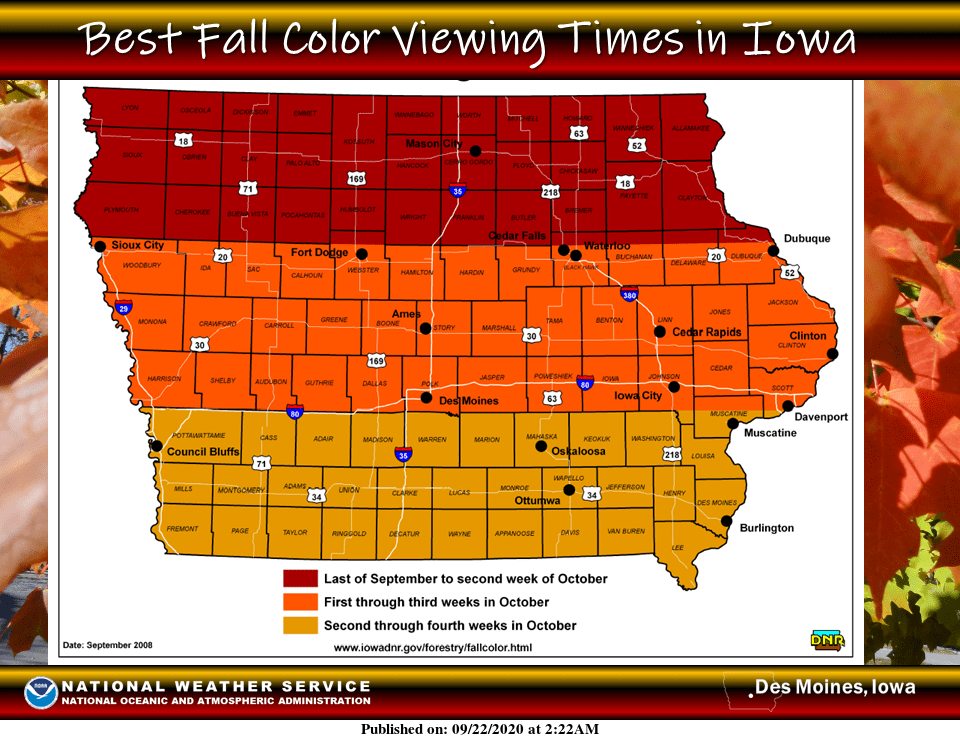
During the first week of autumn, it may feel more like summer in the afternoon, but leaves are beginning to make their annual color change across the state. The Iowa Department of Natural Resources has issued the first Fall Colors report of 2020.
In south central Iowa, color is starting to show in bottomland trees and forest edges, as black walnut, cottonwood, and green ash are turning yellow. Sumac, wild plum, ivy, and white ash along the ditches and forest edges are transitioning into reds and purples.
Central College Professor of Biology Paul Weihe says there are two primary drivers in the annual changing of the leaves.
“One of those would be sort of the yellows, oranges, and golds, and those really are pigments that were present in the plant all along, but those were masked by the green, and that’s what most of us were taught about how color change works,” he says. “But there’s the whole category of colors which are the reds, purples, and some of those really vibrant ones–those are actually produced in response to the changing conditions as we enter the autumn, so those are really acting as a sunscreen to protect the tissues within the leaf, while the tree is recovering some of those materials that the leaf is made out of for recycling and use the following year.”
This fall, the estimated peak of fall colors in south central Iowa will start near mid-October.

